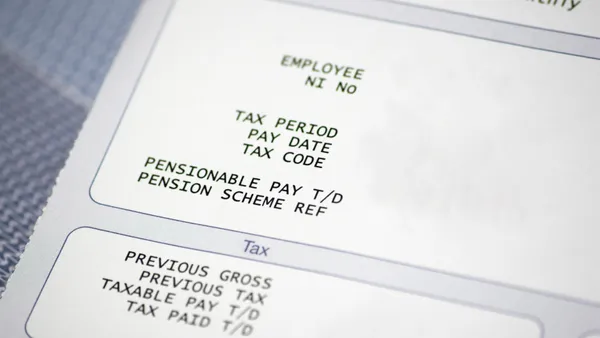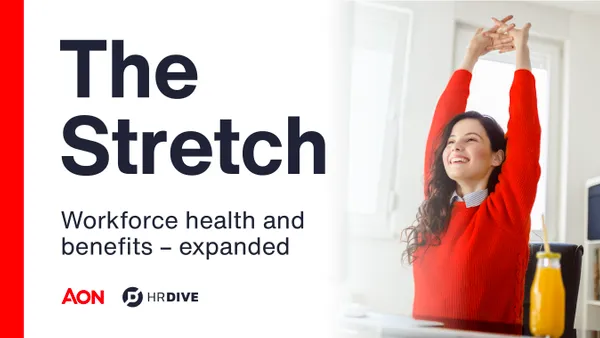Dive Brief:
- The Huffington Post examined four critical factors looming for 2016 that are mainly focused on the impact of the nation's employers' apparent move from "wages to benefits."
- 2015's final jobs report, the December numbers, are due out next week, and the majority of experts forecast "steady job growth and a moderate pick up in wages" during 2016.
- The trend of wages to benefits by employers may be playing a key role in the slowdown of job growth and wages in the U.S. as 2016 begins, the article reports.
Dive Insight:
The article goes on to examine four key variables in the wages to benefits trend: Benefits are growing faster than wages and have been for a decade; most of the shift toward benefits is happening at America's large employers; highly-skilled, white collar and union jobs are driving the shift toward benefits, and finally, not all industries are part of the benefits from wages phenomenon.
What is driving the shift from wages to benefits among U.S. employers? According to the article, the answer may be the "diminishing marginal utility of income," whereby higher paid employees at some point begin to look for other things - i.e., company-provided benefits - than just salary to make life easier. The article cites paid parental leave, which has been much in the news of late as more employers add it to their benefits packages, as an example of why this trend is happening.
Because higher compensation can't really substitute for paternal leave, once a new father or mother hits his or her specific salary mark, it makes sense that they would want time off via an "employer-sanctioned" program.










